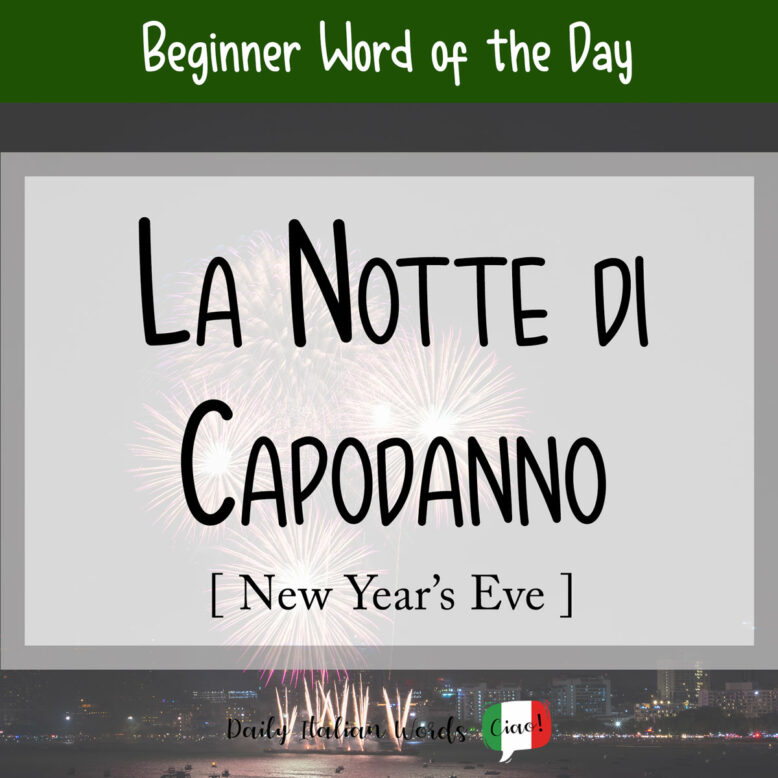Today’s word of the day is part of our Italian Christmas Word Advent Calendar series. Each day throughout December, we’ll post a word that is related to the holiday season. Enjoy!
La Notte di Capodanno (New Year’s Eve) corresponds to the night between December 31st and January 1st.

La Notte di Capodanno is also known as la Notte di San Silvestro or la Vigilia di Capodanno.
Cosa fai la notte di Capodanno?
What are you doing on New Year’s Eve?
Pope Sylvester I (Papa Silvestro I) was a saint who served as the 33rd pope of the Western Church from 314 until his death on December 31st in the year 335. This day, which happened to coincide with New Year’s Eve, was named Saint Sylvester’s Day (il giorno di San Silvestro) in his honour.
In Italy, it is traditional to prepare a New Year’s dinner (cena di Capodanno), an abundant meal featuring zampone or cotechino (both kinds of sausages) with lentils. It is also customary to stay awake until past midnight with friends or family to celebrate the arrival of the new year. Many people gather in the local square to watch the fireworks, whereas others prefer to stay at home or attend a party.

Starting from 10 seconds before midnight (mezzanotte), everyone counts down to zero in unison. When the clock strikes the hour, it is customary to shout out Buon Anno! (Happy New Year!) and toast the health and happiness of everyone in the room by uncorking a bottle of spumante (sparkling wine). It is also tradition to hold grapes and three different coins for good luck while counting down.
Buon anno ragazzi, vi auguro un anno pieno di gioia!
Happy New Year guys, I wish you a year full of joy!
Heather Broster is a graduate with honours in linguistics from the University of Western Ontario. She is an aspiring polyglot, proficient in English and Italian, as well as Japanese, Welsh, and French to varying degrees of fluency. Originally from Toronto, Heather has resided in various countries, notably Italy for a period of six years. Her primary focus lies in the fields of language acquisition, education, and bilingual instruction.


